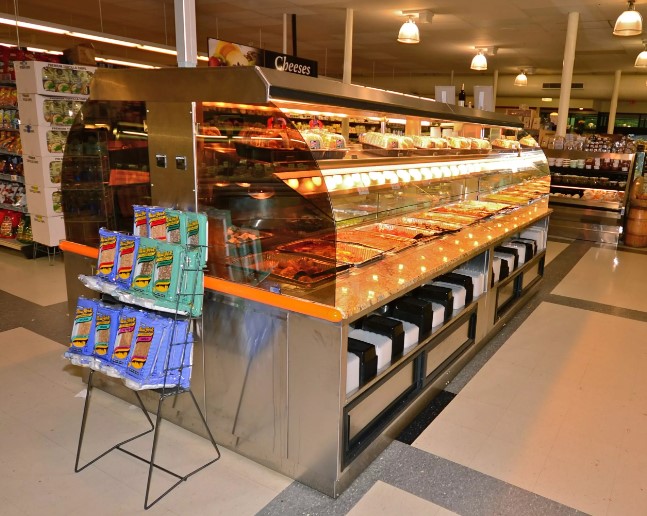/bar-keepers-friend-cookware-cleanser-amazon-XL-AFF0922-tout-2000-7a485fe2c0154fcab96dc2a5800a60de.jpg)
Everyday cooking, even in the most careful kitchens, can leave kitchen tools dull and dinged up from use. Many of us mistreat our kitchen tools without even realizing it, from failing to properly clean and store them to exposing them to harmful elements like excess heat and acid. We’re here to help keep your trusty utensils in good working order with tips to maximize their longevity. Learn the 11 most mistreated tools in your kitchen below.
Rubber Spatulas
Rubber spatulas scrape the last bit of batter from bowls with ease, but they are a top contender for misuse for a couple of reasons. First, not all rubber spatulas are heatproof, which means they can melt if you use them to stir food in a hot pan. The DI ORO Seamless Series 3 Piece Silicone Spatula Set, for example, can withstand up to 600 degrees Fahrenheit.
A spatula can also get damaged when scraping a mixer bowl while the mixer is on, as the blade can catch the spatula edge and chip pieces off into your food. So, always turn off your mixer before scraping. Finally, make sure you clean between the spatula head and handle to keep food remnants from building up.
Price at time of publish: $33
Cast Iron Skillets
Cast iron has a reputation for being difficult to maintain, but it’s also incredibly durable, lasting decades if treated with care. Unlike most materials, cast iron isn’t wash-and-go: It requires proper seasoning and storing, and it can’t be exposed to water for extended periods. Thankfully, the Lodge Cast Iron Skillet you have had for years is also resilient, so even if it’s had a rough go, you can revive it with a bit of elbow grease.
“If it’s a brand new or used pan that shows possible rusting, make a small amount of roux and toss it out after you wipe the pan. Then, clean with warm water and dry upside down in a preheated oven for like an hour. When it cools, it should shine,” says chef Chris Holbrook, who seasons cast iron pans about once a year.
Price at time of publish: $29
Knives
Almost certainly the most mistreated tools in your kitchen, knives are often used on surfaces that dull them, further worn down in the dishwasher, and tossed in drawers with other tools that bang against their blades. It’s easy to change your habits, however, and treat knives with more care. This means washing knives soon after use (but never in the dishwasher, according to restaurateur John Gianoulidis), thoroughly drying them, and properly storing them in a block or on a magnetic knife strip, like the 16-Inch Stainless Steel Magnetic Knife Bar from Modern Innovations.
In addition to avoiding cutting on hard surfaces like glass, using a wooden cutting board and even placing a damp towel or non-slip shelf liner under the cutting board for stability will help preserve your knives, according to chef Chris Holbrook. Finally, use a knife sharpener when needed. Every good meal starts wfith a good knife, so treat them with respect for a noticeable difference.
Price at time of publish: $27
Related: We Tested the Best Chef’s Knife for Every Type of Task
Wooden Cutting Boards
Cutting boards can breed bacteria when we neglect them. Wooden cutting boards in particular need more TLC than washing. Wood dries out and warps if it’s cleaned repeatedly with soapy water, so make sure to season wooden boards with mineral oil occasionally, and never let them soak in water for extended periods. After all, if you’ve invested in a beautiful, thick board like the John Boos Block Maple Wood Reversible Cutting Board, one of our favorites, you don’t want to comprise it.
Also important is using the right cutting board for the job: Gianoulidis uses different colors of cutting boards for different tasks to keep meat (and its bacteria) off the boards he uses for raw food. At home, you can have dedicated plastic boards for meat and chicken, and dedicate your wooden cutting boards to veggies and bread.
Price at time of publish: $201
Wooden Spoons
Like wooden cutting boards, wooden spoons need a bit of love to last a long time without cracking or warping. Preventing bacteria buildup also matters here. Don’t wait to clean wooden spoons soon after using them with a non-abrasive sponge that won’t leave scour marks on the wood. Never soak these spoons in water for extended periods and, as with your cutting board, occasionally oil them to keep the wood in good condition. We love the Oxo Good Grips 3-Piece Wooden Spoon Set for several kitchen tasks.
Price at time of publish: $15
Baking Sheets
Baking sheets work hard yet don’t get the thanks (or care) they deserve. That said, even those known for durability, like Nordic Ware Natural Aluminum Commercial Baker’s Half Sheets, can rust and warp. Make sure to clean and dry your baking sheets thoroughly, paying careful attention to cleaning off any oil buildup before it becomes a sticky, hard-to-remove mess. Store your baking sheets completely dry without any heavy pans on top of them, which can dent and ding the metal.
Price at time of publish: $25
Graters and Zesters
Box graters and zesters like the Microplane Premium Classic Series Zester help us add zest (and cheese and nutmeg) to our dishes, but we tend to toss them back into the drawer after use without checking that they’re thoroughly cleaned. All those little holes can harbor food bits, causing bacteria build-up, rust, and dulling.
Clean your grater with a vegetable brush inside and out, getting into all the little cracks while keeping your hands away from sharp edges. “Warm water, soap, and a soft-bristled brush should get it done, but you’ll need to scrub mostly with the grain of the grater,” says chef Andy Gonzales. You can also reach for a bar of soap. “I saw someone grate a bar of soap once and it looked silly but it works! Just soak it well and wipe rinse afterward with a cloth to get the soap out,” says Holbrook.
Price at time of publish: $18
Microwaves
Microwaves heat dinner in a hurry, but they can also collect food particles and grease. Depending on where your microwave is located in your kitchen, you may not be able to see the inside, but we can say with some authority that it’s probably time to clean it. There are a few easy ways to reduce the amount of food that ends up on the microwave’s interior during use, including properly covering your food before popping it in (the Tovolo Microwave Cover is great for this). But, it’s also good practice to give the inside a regular scrub to avoid it looking like a Jackson Pollack painting.
Price at time of publish: $12
Vegetable Peelers
Vegetable peelers and similar utensils like mandolins have nooks and crannies where bits of food can build up, causing dullness and bacterial growth. Peelers are also stored in a drawer, where they can be dulled by coming in contact with other utensils. To avoid this, clean and thoroughly dry your peeler before storage, and try to store it in a way that keeps the blade away from other utensils. Alternatively, buy a peeler with a protective blade cover, like the KitchenAid Gourmet Euro Peeler, our favorite serrated vegetable peeler.
Price at time of publish: $10
Stainless Steel Cookware
Though stainless steel cookware heats quickly and gives cooks precise temperature control, it’s also prone to burnt-on messes. Indeed, not even our pick for the overall best stainless steel set, Tramontina’s Gourmet 12-Piece Try-Ply Clad Cookware, was exempt from food sticking during our tests.
To remove crunchy food bits after cooking, just deglaze your hot pan with water, then scrape with a spoon or another tool that won’t gouge the metal. To keep your pans in top shape, scrub them when they get dull, too. “For pans, I highly recommend Bar Keeper’s Friend for the bottoms of pans to keep them gunk-free and shiny. Shiny pans get hotter, faster than dirty pans,” says chef Andy Gonzales.
Price at time of publish: $7
Stand Mixers
A beautiful, shiny countertop KitchenAid Artisan Series Stand Mixer will tell anyone who visits that you are a serious cook. As effective as it is for mixing, however, all that batter and dough can build up on its attachments, leaving behind rust, bacteria, and more. To avoid this, make sure your attachments are cleaned and dried soon after use, including the little hole where they attach. Wipe the mixer itself down, too, paying special attention to the parts closest to the mixing bowl. For longevity, store the attachments where they won’t get beaten up.
Price at time of publish: $460
Pastry Brushes
Even if you don’t use brushes every day, they won’t last indefinitely. Bristles fray and loosen over time, and it’s a good idea to check them now and then to make sure they’re in good working order before you need to bust them out. That said, keeping them from other kitchen tools (that is, from knocking around at the bottom of a drawer) will help a lot, and cleaning and drying them right after use helps, too. If you find you go through pastry brushes too quickly, consider buying silicone brushes like the Oxo Good Grips Silicone Basting and Pastry Brush.
Price at time of publish: $11
Conclusion
You may be mistreating your kitchen tools, but you can still change the fate of your hardworking kitchen helpers with simple changes to your routine. By properly cleaning and drying your tools before properly storing them and seasoning your wood cutting boards, wooden spoons, and cast iron pans from time to time, you can extend the life of your favorite kitchen tools and enjoy them for years to come.
Our Expertise
Dr. Julia Skinner is a culinary instructor, food writer, and food historian with over ten years of experience writing and teaching about food. You can find her work at @rootkitchens, on her website, or in her newsletter.
Chef Chris Holbrook has been cooking his whole life and graduated from The Dedman School of Hospitality at FSU in 2005. He has worked in private clubs, hotels, family restaurants, pubs, and catering companies in kitchen and front-of-house roles. Currently, he manages the Aprons Cooking School in Winter Park and oversees Publix Full-Service Catering for the greater Orlando area.
Chef Andy Gonzales is a partner in Steinbeck’s, Oakhurst Market & The Companion in the Atlanta metro area. His extensive amount of experience in Atlanta’s culinary scene is fundamental to his multicultural style of comfort food and extensive knowledge of beverages.
John Gianoulidis (aka John the Greek) is a restauranteur in the Atlanta area who was raised in restaurants and today owns Park Grounds and The Greek Pizzeria & Gyros.








